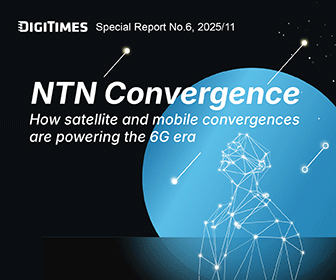Despite the milestone of achieving over one billion users worldwide at the end of 2022, 5G's massive commercialization so far is still limited only to a few markets, while many countries' and regions' mobile users have not exhibited a keen intention to upgrade to the new communication standard, according to DIGITIMES Research's latest study of the 5G industry.
DIGITIMES Research finds three major trends that may influence the 5G market in the long term. First is the extended pace for the transitioning from the existing communication standard and a new one and the number of 5G users is unlikely to surpass that of 4G ones until 2028.
Second is key 5G operators are beginning to experience the benefit trade-off issue, which is likely to result in a shrinkage in their future capex. Third is the growing importance of low baseband (<1GHz) deployment in 5G public networks as high-baseband mmWave-based public networks so far still lack operating efficiency and mmWave's utilization is unlikely to become efficient until the arrival of the 6G era.
The commercialization of 5G networks has already been running for over three years so far and revenues of key telecom operators worldwide such as Verizon, China Mobile, Vodafone Group, and Sk Telecom all enjoyed record revenues from their mobile businesses in 2022 thanks to growing number of 5G users.
However, despite the record revenues, their earnings before interest, taxes, depreciation and amortization (EBITDA) margin has been on a decline since 2019, showing that 5G networks' average revenues per user (ARPU) has benefited operators in their sales, but the high costs from bidding for spectrums, deploying and maintaining hardware, and keeping up high data bandwidth for services have put operators in a benefit trade-off dilemma as more 5G users mean a higher total cost of ownership (TCO).
DIGITIMES Research believes the operations and financial statuses of these key 5G telecom operators will serve as an important indicator of the 5G industry's development. The increased number of 5G networks and its growth rate were both in deceleration during 2020–2022, and in 2022, the number of commercialized 5G networks was only one-third of that of 4G ones, hinting at that many 4G telecom operators are not in a hurry to step up their service offerings.
In the long term, DIGITIMES Research expects issues of lacking a killer 5G application and benefit trade-off to push back schedules of massive 5G commercialization in developing and emerging markets. By 2027, 4G networks will remain the mainstream mobile communication technology, while global telecom operators' combined capex is unlikely to remain at the peak level. Key 5G telecom operators will also begin reducing their spending in a bid to get their gross margins back on a growth track.



